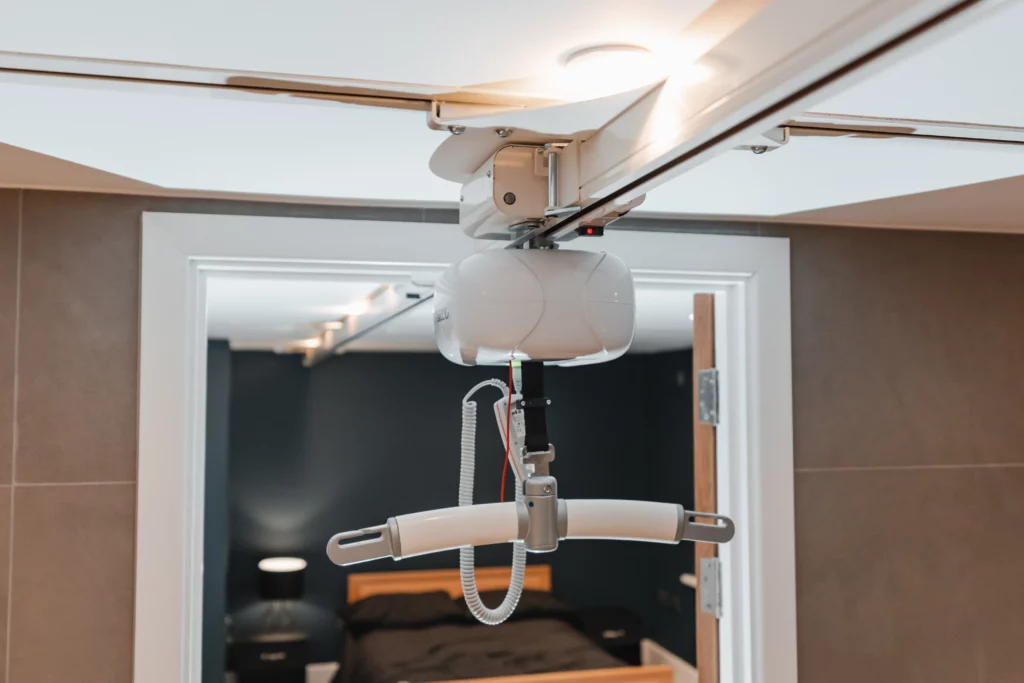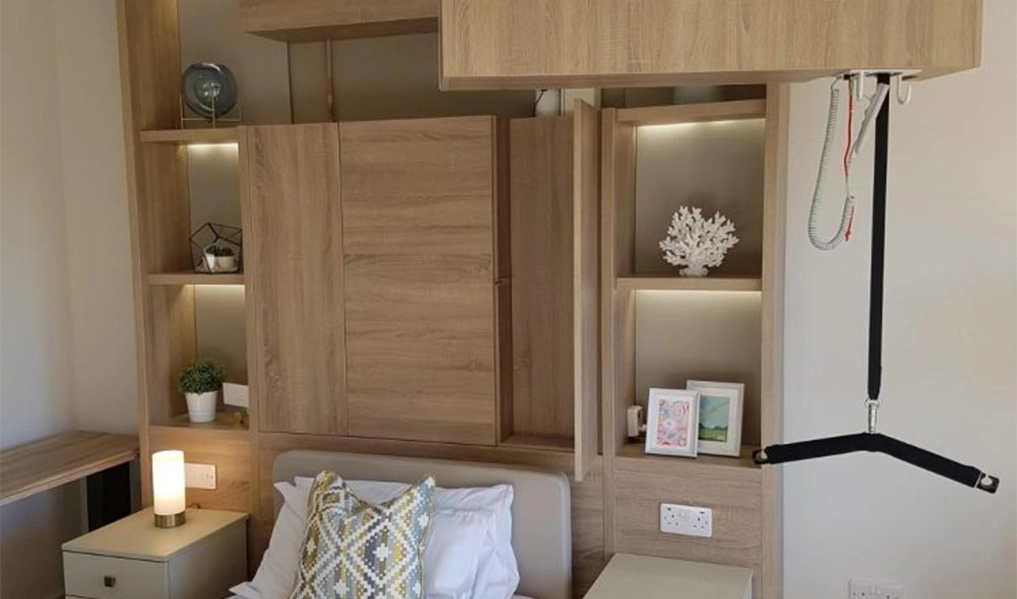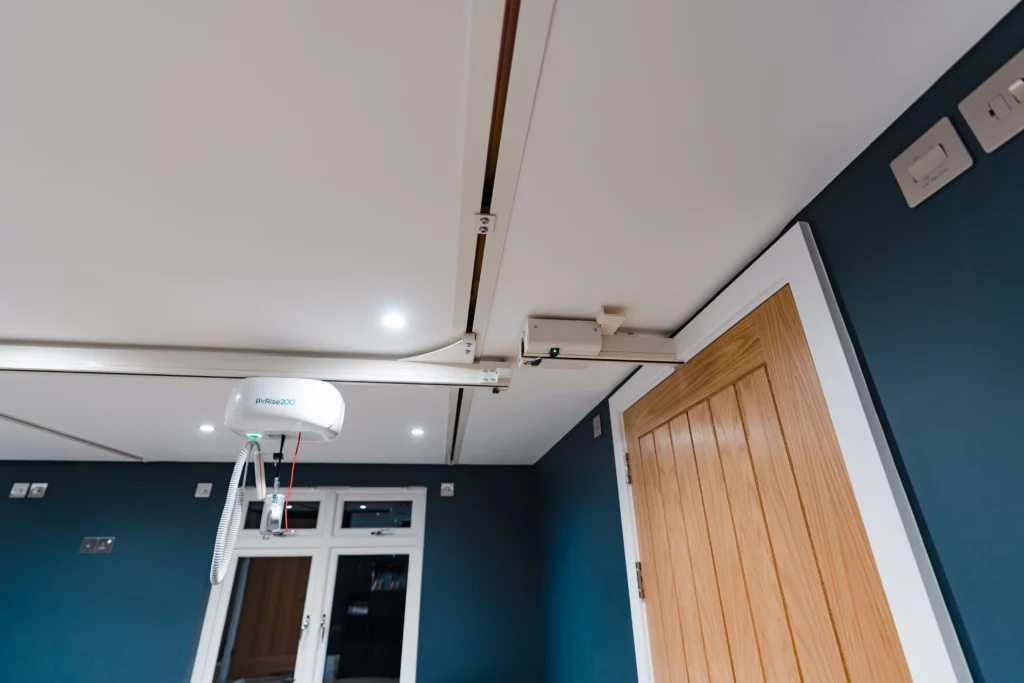The Best Hoists for Disabled at Home
Choosing the right equipment for home care is crucial, and understanding the benefits of hoists for disabled at home can make all the difference. In this blog, we’ll explore the best patient lifting hoists for your home, highlighting their features, benefits, and how they can enhance the quality of life for both patients and caregivers. From ease of use to safety considerations, we’ll provide a comprehensive guide to help you select the perfect hoist for your needs. Discover how the right hoist can transform home care into a more manageable and dignified experience.
Jump Straight To-
- Choosing patient lifting hoists for homes
- Hidden patient lifting hoists
- Ceiling track hoists for homes
- Discreet patient lifting hoists

Choosing Hoists for Disabled at Home
Getting the right hoist for a disabled persons home environment is crucial in enabling an individual to be as mobile and independent as possible. The hoist needs to provide easy, safe transfers without sticking out or appearing too obvious.
We almost always recommend that you choose an overhead hoist system, especially when specifying for a private client.
Whilst mobile hoists might seem like a good option, they’re actually more difficult to use and don’t necessarily give the same amount of coverage.
Hidden patient lifting hoists
For clients who maybe need just a little coverage (for transfers to and from bed or the bath), then something subtle like the Integralift is a fantastic option.
It’s a hidden patient lifting hoist that folds away into a cupboard when it’s no longer needed.
Flexible design enables this piece of hoisting equipment to be installed in a bedhead unit or a cupboard, effortlessly blending in with existing household décor. Furthermore, it’s also available in a variety of different finishes to compliment any colour scheme.
To see how this system works, check out our case study with St Andrew’s Hospice, where we have installed systems into their patient bedrooms.

Ceiling Track Hoists For Disabled at Home
When someone needs more hoist coverage than the Integralift offers, a ceiling track system is your best bet. These use permanently fixed hoist tracks that are installed in the ceiling to allow the user to move all around the house.
If your client doesn’t need full room coverage, you can choose to add a monorail hoist system to your design instead. It’s fairly similar to a train track in that you can move along it in both directions and there are various drop-off points along the way.
A monorail can be used in hallways to connect rooms to other rooms. You can use extra components like track switches and turntables to give the user different options of where they can travel (you can find out a bit more about these solutions in this article).
When it comes to hoists for disabled at home, we mostly recommend that you choose a X-Y system (also called a H-frame). This option gives the client the ability to travel to full X and Y axes of the room with ease.

An X-Y System is perfect for a home adaptation as it gives users full room coverage, helping them to move between rooms more easily.
X-Y Hoists for Disabled at Home
These systems consist of two fixed parallel rails with one traverse rail running perpendicular between them. The hoist unit is used on this rail to give the client access to the whole room.
X-Y hoist systems are also beneficial because they can still be used even if you change the layout of your furniture. A fixed monorail track doesn’t necessarily offer this.
X-Y systems are perfect for bedrooms, bathrooms, kitchens, and living areas where the client will want to move around freely with no restrictions. Choosing between a monorail or X-Y system.
Discreet patient lifting hoists
If you choose to install an overhead hoist system in the client’s home, then you might want to take some extra steps to make sure that it’s as subtle as possible and doesn’t detract from the cosiness.
First of all, you can choose inset track rather than below-hung. This means that the hoist tracking is fitted flush to the ceiling, making it much more discreet wherever it’s used in the house. This is especially beneficial when considering hoists for disabled at home, as it maintains the homely atmosphere while providing essential functionality.
Inset tracking is our recommendation for any overhead hoist systems installed at home as it provides a more discreet and subtle look.
Another step you can take is to add a bespoke cabinet to the design which will hide the hoist unit when it’s not in use. This solution is exclusively for monorail systems.
But of course in terms of subtly and cosiness, the Integralift comes out on top due to its innovative design. You wouldn’t even know it was in the room!
Summary
Getting the best patient lifting hoists for homes will help your client to feel more at home and it will help them stay mobile and independent.
We hope that these tips on the different options available will help you decide on the best system!
To learn more about which hoist system is best suited for you or your client’s home environment, complete the contact form below.
Can we help with anything?
Be sure to use the contact form and reach out to us if you have any questions about the content above.